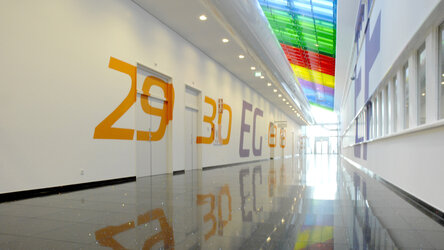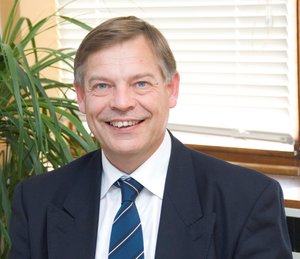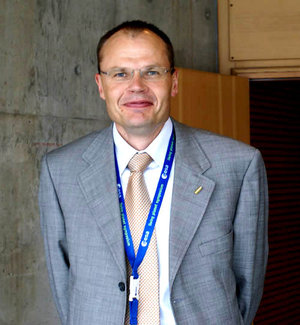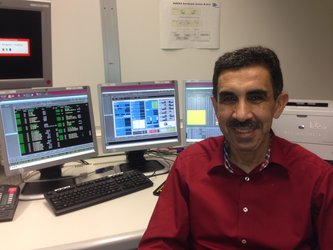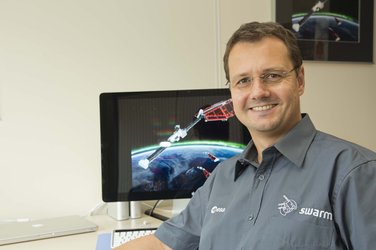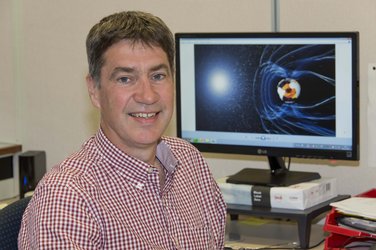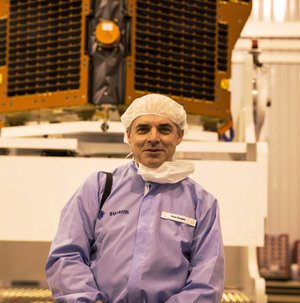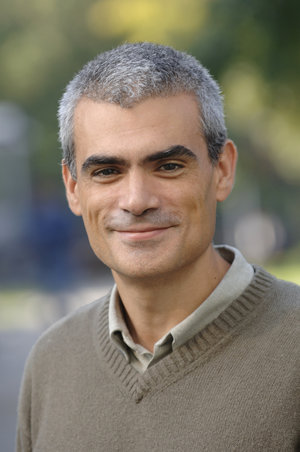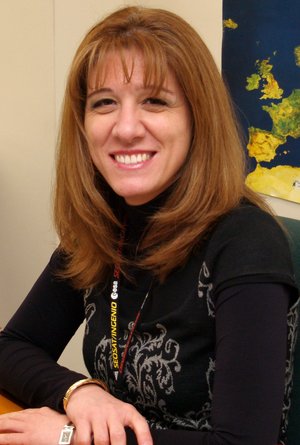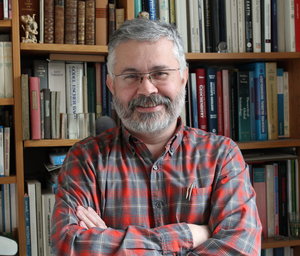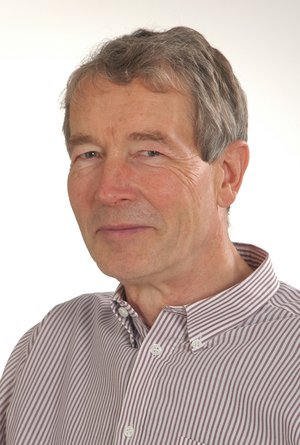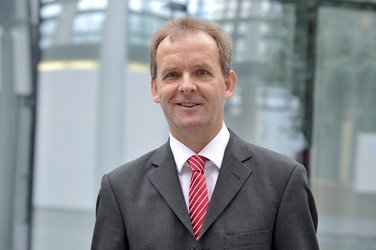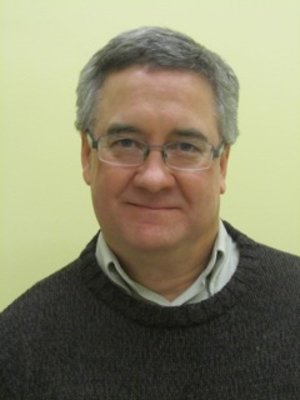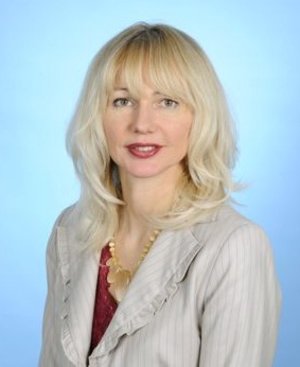Abderrazak Bouridah: System Manager
ESA’s Abderrazak 'Karim' Bouridah has been the Swarm System and Instrument Manager since 2012 but has been involved in the design and development of Swarm since 2004. He has been responsible for coherency between the satellite, the ground segment and the launcher systems – all the way from when the mission was defined through to the satellites being in orbit delivering data. This also includes verifying that the mission is performing on task and meeting its scientific objectives.

Abderrazak (Karim for short) Bouridah, is a French national. He has been working for ESA's European Space Research and Technology Centre in the Netherlands since 1986. Prior to his role with Swarm, he worked as an engineer in ESA’s Technical Directorate on a number of missions, including Envisat, MetOp and the first CryoSat.
Karim graduated from the École Nationale Supérieure d'Électrochimie et d'Électrométallurgie at the Grenoble Polytechnic Institute, France, and earned a PhD in solid-state lithium batteries.
ESA: How do you feel now that the three satellites are safely in orbit around Earth?
Karim Bouridah
Relieved and happy; we’ve been looking forward to this event for more than a year as we had to wait for the Rockot launcher to be ready.
In mid-August, we finally got the go-ahead for a launch in November so industry and ESA had to prepare everything quickly so that the teams, the three satellites and ground support equipment were operational by end of September. We monitored and reviewed the final testing of the payload at the launch site, which was completed by mid-October and then we came back to participate in the simulations of the launch and early operations, or LEOP, phase.
After launch, the LEOP period was quite tense, especially when we were waiting for the first signals. It has involved long shifts to execute the sequence of operations to bring the three satellites into a stable and operational state.
ESA: Can you tell us a little about how the satellites’ magnetic performance is verified and qualified?
Karim Bouridah
The design of the identical Swarm satellites is similar to that of the earlier German Champ magnetic mission. It comprises a main platform body and a deployable boom carrying the magnetometers and the startracker cameras positioned away from the magnetic noise of the body.
Two magnetometers are housed on the boom: the Vector Field Magnetometer (VFM) supplied by Danish Technical University and the Absolute Scalar Magnetometer (ASM) supplied by CNES. The VFM is mounted on a mechanically stable optical bench together with three startracker cameras.
As well as the normal environment tests, each VFM magnetometer was subject to a suite of calibrations and each VFM optical bench-camera assembly was tested in an astronomical observatory to establish attitude transformation matrices and to check the thermo-mechanical stability of the optical bench.
The ASM is positioned at the tip of the boom and is used for daily calibration of the VFM. It uses a novel working principle based on magnetic resonance frequency measurements of helium atoms. This frequency is linked to the ambient magnetic field and the absolute scalar precision is predicted to be few ppm of the measured field strength.
A stringent magnetic design and test control programme was carried out by Astrium GmbH to ensure very low magnetic signatures from unit and instruments levels. During the design phase, guidelines were enforced to avoid any disturbances that could impact the quality of the magnetic measurements.
The attitude, orbit and control system was also adapted so that the magnetorquers would be actuated with only small current steps to minimise their magnetic effects.
Prior integrating the components in the satellite, most of the units were systematically characterised and kept within a ‘magnetic budget’. Each round of assembly, integration and testing included extensive efforts to characterise the magnetic disturbances of the satellite so that they can be accounted for in the data. These tests needed a magnetically clean and controlled environment, hence they were carried out in a special facility in Ottobrunn, Germany.
ESA: As well as magnetic field instruments, the satellites each carry an accelerometer, what are they used for?
Karim Bouridah
The accelerometer is an instrument designed to measure non-gravitational accelerations in orbit. These measurements are processed to realise air drag data. Air density models can be derived from these products and will be used with magnetic data to gain a new understanding about the relationship between geomagnetic activity and air density in the upper atmosphere.
ESA: You are now busy commissioning the mission, what does this phase involve?
Karim Bouridah
The first step of the commissioning is to verify that the satellite platform and instruments work as they should. For the instruments, this means sequentially switching them on through all their operational modes and analysing the telemetry data to check whether they are as expected. The scientific data is also assessed and then processed with ground-based calibration parameters.
The next step is to carry out some specific manoeuvres to adapt and update the calibration parameters. So far, the three satellites are flying at the same altitude but they will be put in their operational orbit once we are absolutely sure they are healthy working correctly.
There are numerous and delicate manoeuvres to be undertaken to get them to the right altitude and this could exceed the original three months which was planned for the commissioning.
The commissioning also includes verifying the ‘payload data ground segment’, which is managed by ESA’s centre for Earth observation in Italy, from which scientific products are generated and distributed. A commissioning review will be held to close the industrial activities and state that the mission is compliant with its planned performance. This will be followed by the handover of responsibility to the Swarm Mission Manager – marking the end of the ‘project’s’ involvement.
I’d like to add that the commissioning started very smoothly thanks to the good preparation and coordination from my colleague Ralf Bock and teams from the project, the European Space Operations Centre in Germany and from ESA’s centre for Earth observation.
ESA: What have been the most rewarding aspects of working on this mission?
Karim Bouridah
Firstly, it has been extremely rewarding to manage the system and instruments team at the most compelling period of the project. As a member of the Swarm team since the beginning, it has been rewarding to see that all these years of effort from inside and outside ESA have turned into a successful mission. And, also it was great to see the satisfaction and light in the eyes of the scientists on the day of launch.
Editor's note:
This is one in a series of interviews with a few of the key people that are involved in the Swam mission. Please check back as the list will be added to over the coming weeks.




